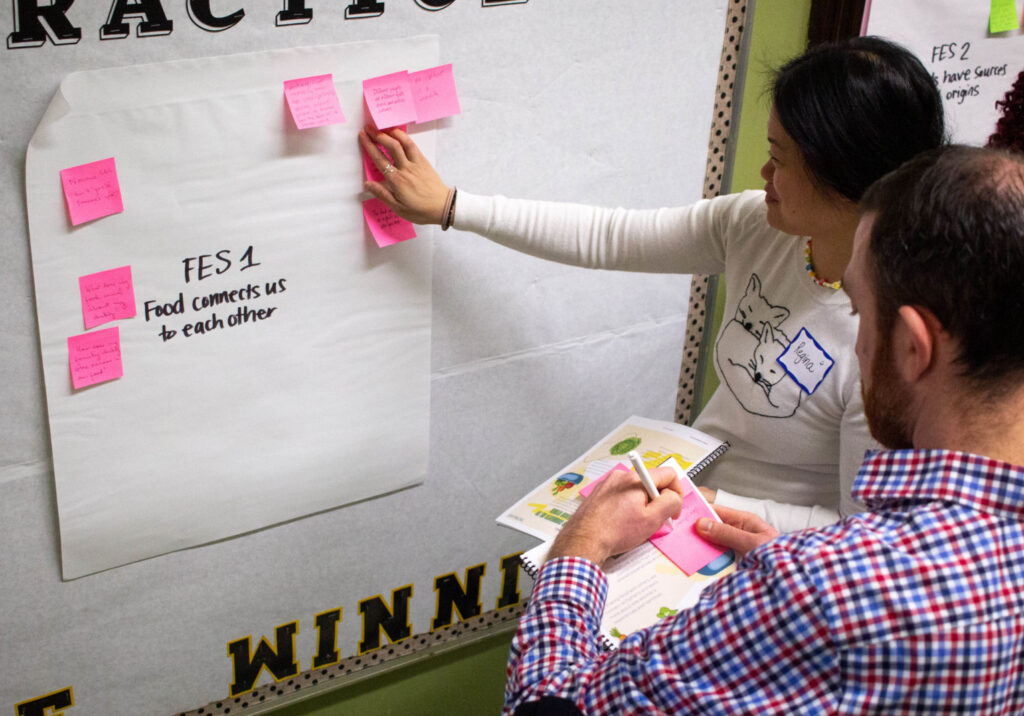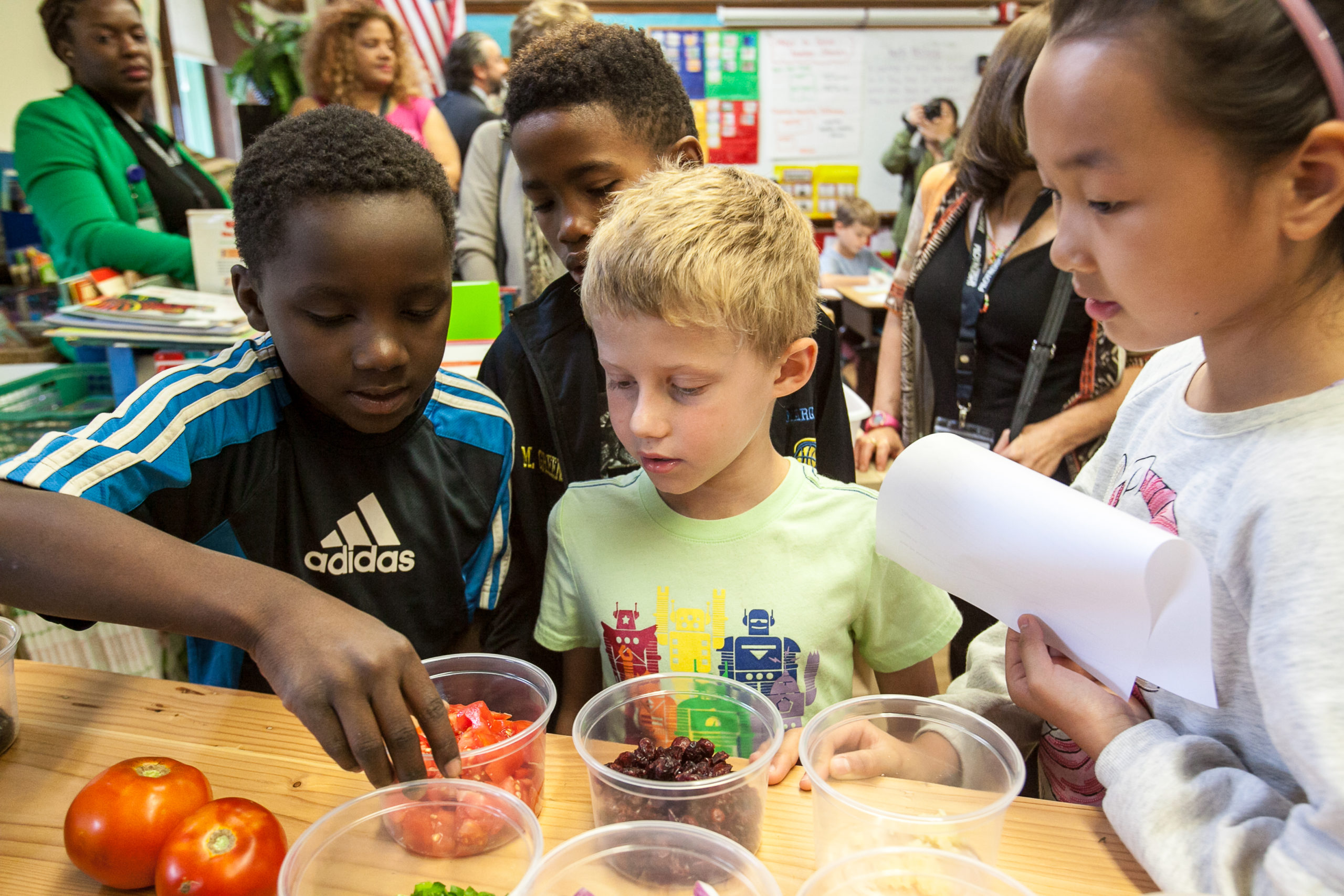The Food Education Standards
The Food Education Standards (FES) are 7 educational standards that encompass the benchmarks of the knowledge, skills, and attitudes necessary to the development of a comprehensive, positive relationship with food.
Now NEW and UPDATED for greater Food Education access! Find the 2025 revised and updated Food Education Standards here!
Developed by teachers and for teachers, the Food Education Standards were developed to support educators implementing Food Education in their classrooms. Curious to about why Food Education is important? Read more.

In 2018, Pilot Light introduced the first-ever Food Education Standards (FES). Our goal was to provide educators with a practical roadmap for weaving food into everyday classroom learning, creating lessons that resonate far beyond the school’s walls. Since then, teachers across the United States have used these standards to create learning experiences for students of all ages, backgrounds, and ability levels. Through their leadership, we have seen the FES grow into more than a framework for learning.
Today, they represent a vision for a future where Food Education becomes an integral part of learning in schools throughout the country, sparking curiosity, fostering inquiry, and encouraging students to think critically about the role of food in their lives. Now, we are proud to introduce the revised and updated Food Education Standards. They are responsive to the needs of teachers and students and reaffirm our commitment to make relevant Food Education a reality in schools nationwide. The new edition of the Food Education Standards has been updated to:
- incorporate greater diversity in food system expertise,
- reflect best practices in teaching and learning, and
- include competencies tailored to PreK students for greater accessibility
Click each link below to learn more about each Food Education Standard and how they work inside classrooms across the country.
1. Food connects us to each other.
By sharing food with others, we connect as humans and learn more about one another’s experiences and identities.
2. Foods have sources and origins.
By honoring and acknowledging the land and people who grow and cultivate food, we can better understand the context and stories of cultures and trace their movements over time.
3. Food and the environment are interconnected.
By recognizing food (in all its forms) as a part of an ecosystem, we can analyze the interdependence of all living organisms on one another for energy and better address the effects humans have on the environment.
4. Food behaviors are influenced by external and internal factors.
By identifying internal and external factors that influence food choices, we can think critically about our own individual food behaviors while taking into account environmental, social, and emotional factors that determine our relationship with and access to food.
5. Food impacts health.
By building knowledge around how different foods interact with the body to sustain us, we can identify the benefits of nutrient-dense foods and their effects on our bodies and minds.
6. We can make informed food choices.
By experiencing autonomy over our bodies with access to nutritious and vibrant food, we are empowered to make informed food choices in our lives.
7. We can advocate for food choices and changes that impact ourselves, our communities, and our world.
By making our own food choices heard and centering the voices of young people, we can help young people build an equitable food future that is their own.

